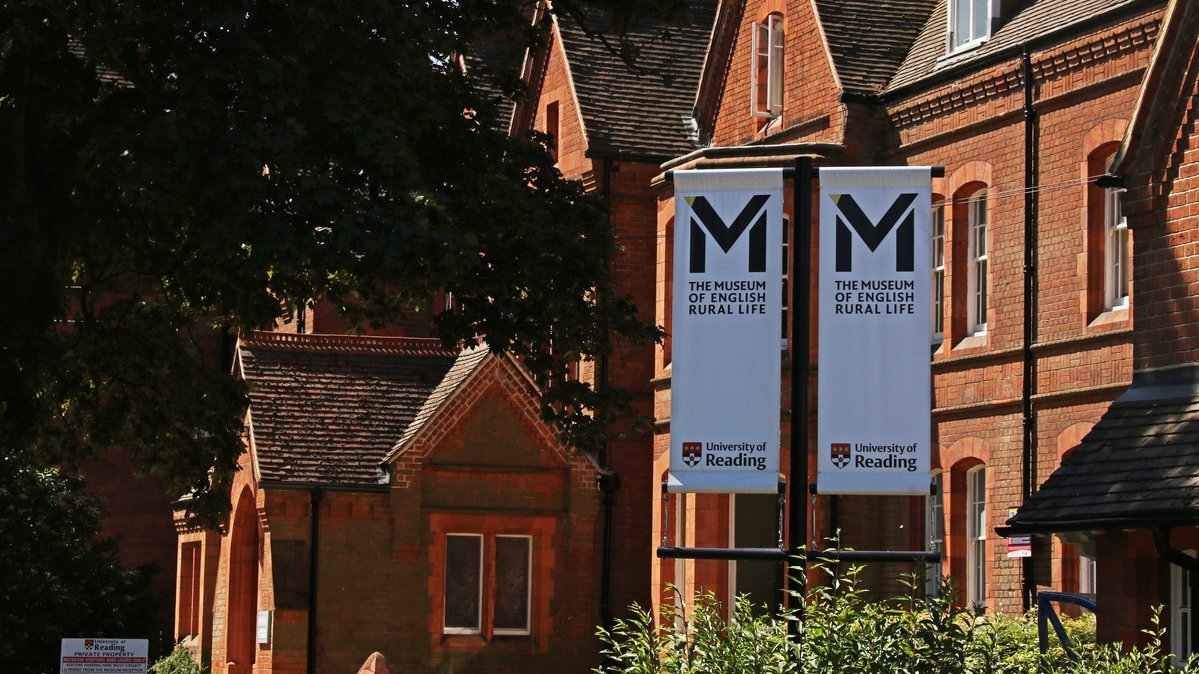
The sun is shining, the birds are singing, and we have found something wonderful in our archive that we want to share with you.
Like many of the best things in life, it is all about bees.
(a thread)
Like many of the best things in life, it is all about bees.
(a thread)

In 1892, there was a sixteen-year-old boy who loved bees very much. Not so much that he became a bee, but he did become a renowned and widely published bee expert.
His name was Frederick William Lambert Sladen. And this the story of one of his earliest works.
His name was Frederick William Lambert Sladen. And this the story of one of his earliest works.
For context: our library holds tens of thousands of volumes. There are rare books, un-rare books, pamphlets and periodicals, from the 1500s to the present day.
It's like an incredible collection of Pokémon cards; only the cards are pieces of the jigsaw puzzle of rural history.
It's like an incredible collection of Pokémon cards; only the cards are pieces of the jigsaw puzzle of rural history.
It's where we learned, among other things, that Richard once put a chicken in some trousers.
https://twitter.com/themerl/status/1048543324196495361?lang=en
This week, one of our archivists (Ted) came across a small pamphlet within the library's Cowan Bee Collection (which we tweeted about just last month on the best of days: Bee Day).
https://mobile.twitter.com/TheMERL/status/1395344759946891265
The pamphlet is titled 'The Humble Bee'. It’s a small booklet - at 40 pages, and 15cm tall - that at first glance caught us with its quirky design and peculiar typeface.
Notice the subtitle: 'Its Life Story & How to Domesticate It'. 1892's response to How To Train Your Dragon.
Notice the subtitle: 'Its Life Story & How to Domesticate It'. 1892's response to How To Train Your Dragon.

But on closer inspection, we realised that this text was printed by Sladen himself when he was just sixteen.
And not only that: it's the second edition, 'enlarged and revised' by Sladen himself.
And not only that: it's the second edition, 'enlarged and revised' by Sladen himself.

(we have also learned that there is a copy of the first edition of Sladen's pamphlet at @NHM_London! Reference: Entomology Rare Books SB o S.41.)
Sladen's self-styled text was made with an early duplicating machine: a cyclograph. The process was invented by a man called Gestetner in 1881.
The machine used special wax plates that could be drawn upon with a special stylus (a cyclostyle).
The machine used special wax plates that could be drawn upon with a special stylus (a cyclostyle).
The stylus had a small, spiky wheel on the end that perforated the plates, and allowed for ink to be printed onto paper.
This is an example of the machine dating from 1893 (from the @ScienceMuseum, ref: Gestetner, D. Ltd. WC2)
This is an example of the machine dating from 1893 (from the @ScienceMuseum, ref: Gestetner, D. Ltd. WC2)

Sladen (ingeniously) used this printing technology, designed for duplicating small runs of administrative documents, to make this lovely little book. His study of the humble bee.
Here's the inside cover, complete with Sladen's beautiful illustrations.
Here's the inside cover, complete with Sladen's beautiful illustrations.

Sladen's humble-yet-wonderful-piece is really interesting as a printed item, because it falls somewhere between a printed book and a hand-written document. If anything, it's like an early example of a zine!
Sladen even distributed it himself, and charged people too. There’s a clipping from a newspaper pasted inside the cover from a peer in the bee biz, advising how people can get their own copies.
This was a very tenacious and enterprising young man, who stopped at nothing to share his love and knowledge of bees.
Sladen went on to become an established bee expert, and his work on The Humble Bee became a full-length monograph in 1912.
This, and his other works are well represented within the Cowan Bee Collection at the museum.
This, and his other works are well represented within the Cowan Bee Collection at the museum.
Here's another page.
Alongside more gorgeous illustrations of proportionately delightful bees, Sladen advises that the best way of finding (and, gulp, taking) bees' nests is to have a plan.
And a young man with a plan this young bee expert truly was.
Alongside more gorgeous illustrations of proportionately delightful bees, Sladen advises that the best way of finding (and, gulp, taking) bees' nests is to have a plan.
And a young man with a plan this young bee expert truly was.

You can learn more about the Cowan Bee Collection on The MERL website!
merl.reading.ac.uk/news-and-views…
merl.reading.ac.uk/news-and-views…
• • •
Missing some Tweet in this thread? You can try to
force a refresh











